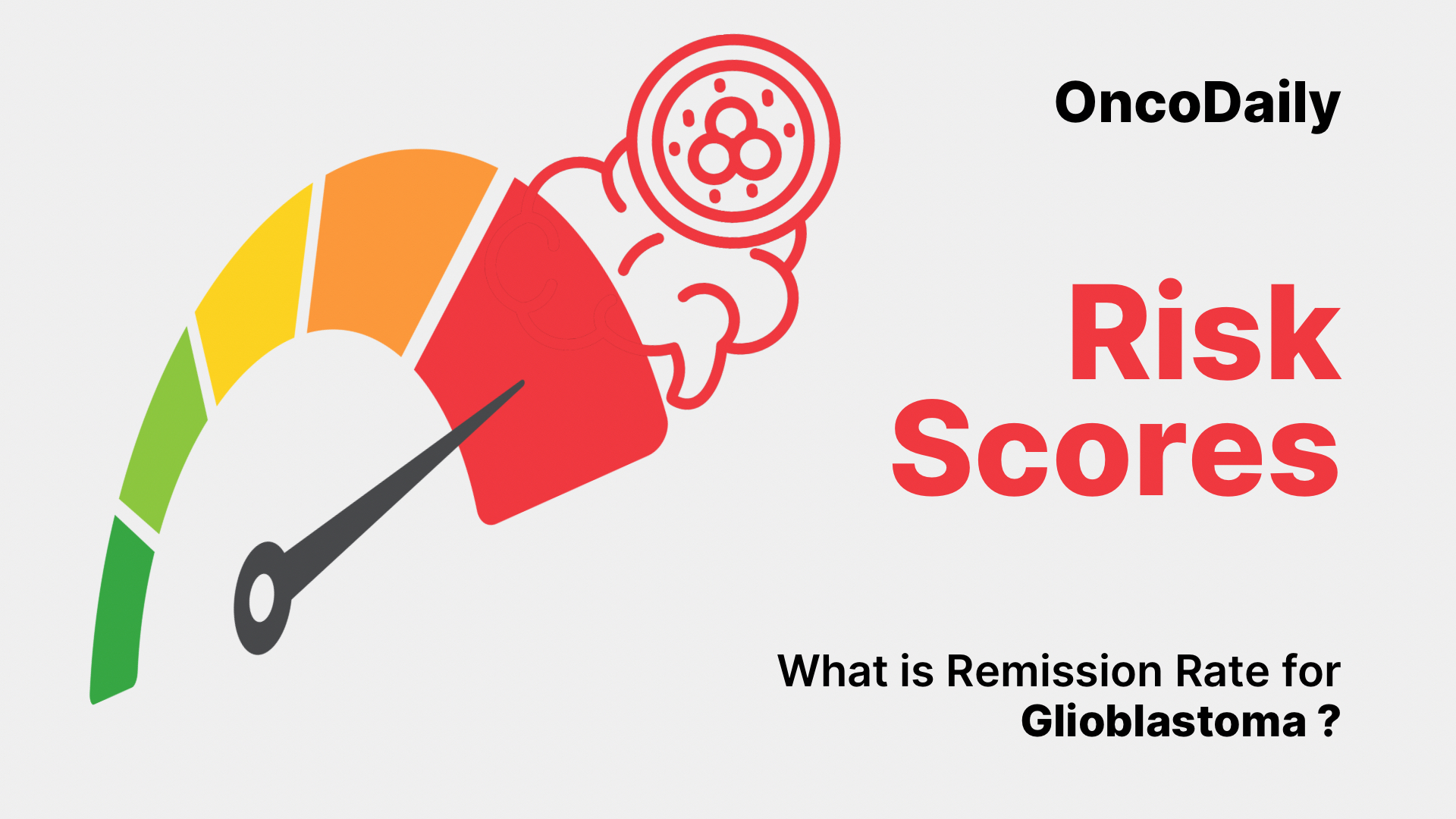Glioblastoma, also called glioblastoma multiforme (GBM), is the most aggressive type of primary brain tumor in adults. It accounts for nearly 50% of malignant brain cancers and is known for its rapid growth, resistance to therapy, and high recurrence rate. Understanding the glioblastoma remission rate helps patients and families better grasp treatment goals, expected outcomes, and why ongoing research is crucial to improving survival.

Read About Glioblastoma on OncoDaily
What Does “Remission” Mean in Glioblastoma?
In cancer care, remission typically refers to a period when the disease is undetectable or no longer progressing. However, for glioblastoma, true remission—meaning complete and lasting disappearance of all tumor cells—is exceptionally rare. The glioblastoma remission rate is low because the tumor tends to infiltrate surrounding brain tissue, making full surgical removal nearly impossible. Even with advanced imaging and surgical techniques, microscopic cells often remain and eventually regrow.
Current Standard Treatments and Their Impact
Standard therapy for glioblastoma includes maximal safe surgical resection, followed by radiation therapy and temozolomide chemotherapy (the Stupp protocol). This combination remains the backbone of treatment globally.
Studies show that with this approach:
- The median survival is about 14 to 18 months,
- Two-year survival is approximately 25%, and
- Five-year survival remains under 7%.
Because glioblastoma almost always recurs, the glioblastoma remission rate is typically temporary, lasting only a few months before relapse. Nonetheless, early and aggressive treatment can extend survival and, in rare cases, lead to longer remission periods lasting two or more years.
Partial vs. Complete Remission
Most patients experience partial remission—a period of tumor shrinkage and symptom improvement following surgery or chemoradiation. Complete remission, where no tumor is visible on MRI, occurs in fewer than 5% of cases, and even then, microscopic residual cells usually persist.
In patients who achieve temporary complete responses, recurrence commonly occurs within 6–9 months. However, a small subset—often those with MGMT promoter methylation or IDH1 mutations—may enjoy extended remission beyond two years. These molecular markers are associated with increased sensitivity to temozolomide and improved outcomes, influencing the glioblastoma remission rate across patient groups.

Read About Glioblastoma Cure Rate on OncoDaily
Factors That Influence the Glioblastoma Remission Rate
The glioblastoma remission rate varies depending on several biological and clinical factors:
- Extent of Surgical Resection: Patients who undergo near-total or total tumor removal live significantly longer than those who have only a biopsy.
- Molecular Profile: MGMT methylation and IDH1/IDH2 mutations predict better response to chemotherapy.
- Age and Performance Status: Younger patients and those with good functional status tolerate treatment better and achieve longer remission periods.
- Treatment Adherence: Completing all cycles of temozolomide and participating in follow-up imaging increases the chance of sustained remission.
- Access to Clinical Trials: New therapies, including tumor-treating fields (TTF), immunotherapy, and targeted drugs, can improve individual remission outcomes.
Emerging Therapies and Their Effect on Remission
While the standard therapy has changed little in two decades, new strategies are showing promise in improving the glioblastoma remission rate. Tumor-treating fields (TTF), an FDA-approved device therapy, has been shown to increase median survival to around 20.9 months when combined with temozolomide. Some patients treated with TTF have experienced long-term disease control exceeding two years.
Immunotherapies, such as personalized vaccines (e.g., DCVax-L) and checkpoint inhibitors, aim to stimulate the immune system to recognize and destroy tumor cells that survive after surgery or radiation. Early-phase studies have reported isolated cases of durable remission lasting five years or more, although these remain exceptional. Targeted molecular therapies, including agents aimed at EGFR, VEGF, and PI3K pathways, have not yet dramatically improved the glioblastoma remission rate, but ongoing trials continue to refine patient selection to enhance benefits.
Recurrence and Long-Term Management
Even after remission, glioblastoma often recurs, sometimes in the same area or at distant brain sites. Management of recurrence may involve repeat surgery, re-irradiation, bevacizumab (Avastin), or enrollment in clinical trials testing novel agents.
Some patients achieve second remissions through these interventions, but durable, long-term control remains rare. The goal of therapy in recurrent GBM is often to maintain function, minimize symptoms, and extend quality-adjusted survival rather than achieve permanent remission.

Read About Brain Cancer on OncoDaily
Living With Glioblastoma
A diagnosis of glioblastoma can be overwhelming, but understanding the glioblastoma remission rate provides realistic expectations and helps patients make informed decisions about their care. Supportive therapies—such as neurorehabilitation, psychological counseling, and palliative care—are essential components of comprehensive management.
Importantly, many patients live meaningful lives during remission, returning to work or daily activities, especially when managed at specialized neuro-oncology centers with access to cutting-edge treatments and clinical trials.
Conclusion
The glioblastoma remission rate remains low, reflecting the tumor’s aggressive biology and resistance to current treatments. However, ongoing advances in surgery, molecular medicine, and immunotherapy continue to extend survival and improve quality of life for many patients. For now, remission—though often temporary—remains a valuable goal, offering patients time, stability, and hope as research moves closer to more durable and potentially curative therapies.
You Can Watch More on OncoDaily Youtube TV
Written by Armen Gevorgyan, MD
